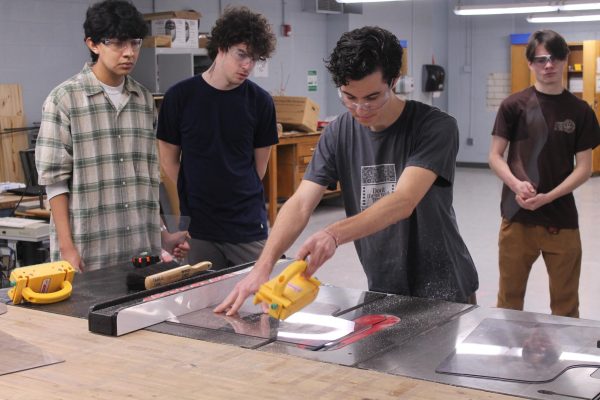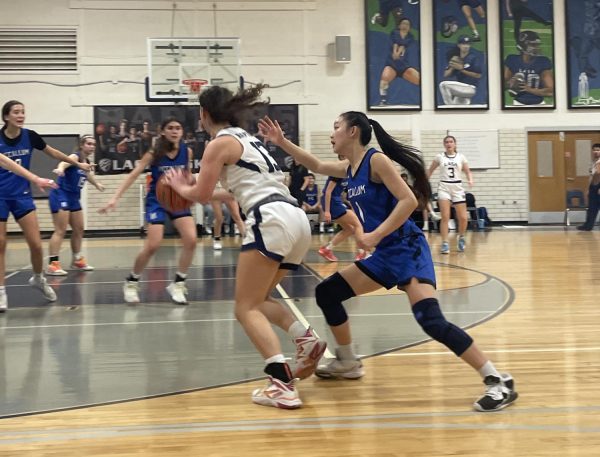LASA teachers float from class to class
April 12, 2019
All teachers have to handle rowdy classrooms and heaps of papers to grade, but not all of them have to face packed hallways between classes. When the bell rings, teachers who do not have their own classroom have to fight through hordes of students to get to their next class, rather than being shut safely in the privacy of a classroom.
When teachers have off periods, other instructors use their classroom for their lessons. The floating teacher system is not unique to LASA. As class sizes increase, schools have to hire more teachers, and eventually, there aren’t enough classrooms for each teacher.
Social studies teacher Maricruz Aguayo-Tabor said LASA has always had floating teachers, even back when it was in the same program as LBJ.
“I don’t know of a high school that doesn’t have at least one floating teacher,” Aguayo said. “Particularly if that high school is near, at, or over capacity like we are on this campus.”
The floating teacher system has been in place since the school was founded, but it’s become more necessary as time has passed. Social studies teacher Neil Loewenstern said floating is especially important this year because of all the new faculty members.
“We have a lot of new teachers, and we just don’t have enough extra classrooms for them, so that’s made the switching necessary,” Loewenstern said. “We just don’t have enough space in the building.”
Although LASA has always used the floating teacher system, the school made significant changes this year. The system is far more organized than it was in previous years, and Loewenstern said LASA is making an effort to accommodate the new teachers.
“I floated my first year here back in 2002,” Loewenstern said. “I was in four classrooms every day. What’s different this year is the veteran teachers have to float to accommodate all these new teachers and help them so they don’t have to float like I had to. That way, generally, they only have to float to maybe two classes in a day.”
The system presents many challenges for floating teachers. Math teacher Andrew Stepek said it is difficult to teach in a classroom that’s not equipped for his students’ needs because he has to make adjustments during class time.
“Anytime you’re coming into another teacher’s classroom, especially if it’s not a regular math classroom or a classroom that’s suited for the subject you’re teaching, it’s harder,” Stepek said. “You don’t really have the same amount of time to set up before and clean up afterward. Not everything’s always set up well. It’s wasted time, essentially. You’re losing instruction.”
Aguayo said she is one of the teachers who doesn’t have to move classrooms, largely because her class requires certain supplies. However, other teachers do float into her room, which she said can be slightly problematic.
“The most immediate effect is that I’m unable to stay in my room during my B day planning period,” Aguayo said. “That’s annoying only because there is limited space for teachers to go to during their planning periods anyway that are quiet and facilitate the ability to get work done, or to make calls privately, etcetera.”
While the system doesn’t affect students as much as teachers, Stepek said it can still be a problem. It can be difficult for them to ask teachers questions when their classrooms change.
“They’re losing instructional time,” Stepek said. “Sometimes they don’t know where to find their teachers. Last year, I was notoriously difficult to find because I didn’t have a classroom regularly.”
The floating teacher system is inconvenient for teachers and students. According to Loewenstern, floating will not be necessary once LASA relocates to the new campus, but at the moment, there’s no alternative solution.
“At this point, I think there really isn’t much other choice, besides making those new teachers float more, and those of us that have been there and done that know that’s not really helpful for new teachers,” Loewenstern said. “It’s too unsettling and unstable, and it doesn’t help them be successful, whereas veteran teachers like myself, while it’s an inconvenience, we know we can teach wherever.”






